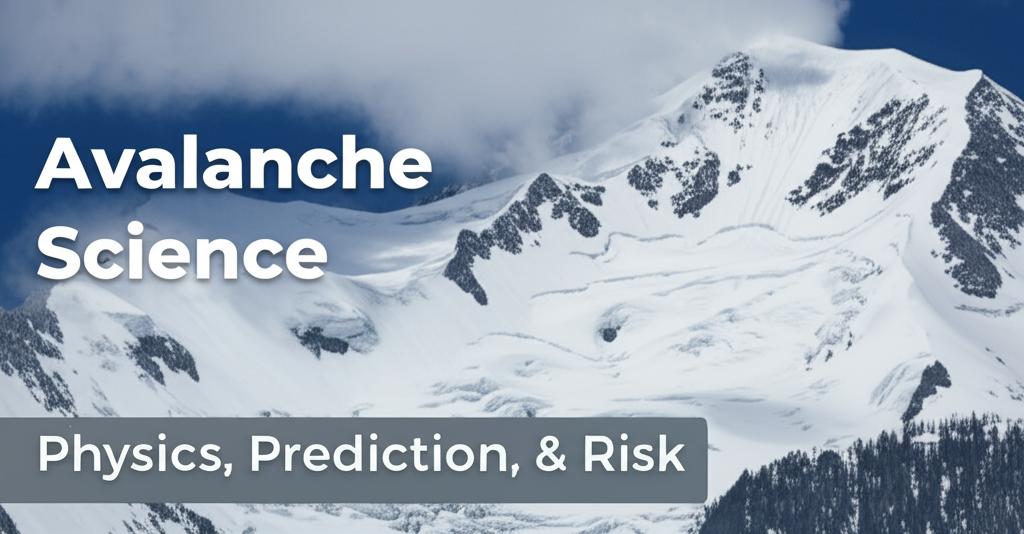Avalanche science is a continually evolving field, indispensable for protecting lives and infrastructure in mountainous regions. Understanding the intricate physics of snowpack behavior, improving prediction methodologies, and implementing effective risk management strategies are the cornerstones of avalanche safety.
Recent advancements highlight the complex interplay of factors contributing to avalanche formation. The study of snow and ice mechanics, including how snow layers interact, transform, and ultimately fail, is paramount. Climate change is introducing new variables, leading to unusual avalanche release patterns and dynamics that differ from historical models. This necessitates ongoing research into the viscoelastic and elasto-plastic properties of snow, as well as how features like snow gliding influence stability. Investigations into the entrainment process – how an avalanche accumulates more snow as it descends – are revealing that the interaction between the flowing avalanche and the stationary snowpack can have diverse effects on the avalanche's behavior and destructive potential. Sophisticated 3D simulation methods are providing unprecedented insights into crack propagation in snow slabs, with recent findings suggesting that beyond a certain point, slab tension becomes the primary driver of the release, similar to "supershear" rupture mechanisms in earthquakes.
Predicting when and where avalanches will occur remains a significant challenge, traditionally relying heavily on human expert interpretation of weather forecasts, snowpack observations, and field tests. However, the field is increasingly embracing data-driven approaches and technological innovations. Machine learning algorithms are being trained on vast datasets of meteorological conditions, snowpack characteristics, and historical avalanche occurrences to identify patterns and improve forecast accuracy. These models can predict avalanche danger levels, identify typical avalanche problem types, assess snowpack stability, and even forecast avalanche activity. Remote sensing technologies, including satellite imagery (optical and radar), drones, and aerial photography, offer invaluable tools for monitoring snow cover, snowpack stability, and terrain features over large areas. Data fusion techniques, combining information from multiple remote sensing platforms, help overcome limitations like cloud cover and improve the spatial and temporal resolution of monitoring. Real-time monitoring systems, using sensors placed in avalanche-prone areas, provide continuous data on snowpack stability and weather conditions, alerting authorities and backcountry users to potential hazards. Physics-based snowpack models, like SNOWPACK, simulate the evolution of the snow cover and are being used to predict both dry-snow and wet-snow avalanche activity.
Effective risk management integrates these scientific advancements into practical safety measures. This includes improved avalanche forecasting disseminated through public bulletins and information exchanges like InfoEx, which allows professionals to share observations and assessments. Avalanche safety equipment is also constantly evolving, with advancements in transceivers, airbags, and rescue tools like avalanche radar and Recco reflectors. Drones are emerging as valuable tools for searching for victims, material transport, and even controlled avalanche blasting. Risk management frameworks increasingly rely on standardized approaches, such as the ISO 31000 standard, to guide planning and operations. Comprehensive planning, clear communication, ongoing training, and information sharing are crucial components of mitigating avalanche risk. New tools are being developed to help backcountry users assess risk, such as routing algorithms that consider avalanche terrain and current forecasts. Furthermore, there's ongoing discussion and refinement of avalanche danger scales to provide more nuanced information to the public. The integration of all these elements – from fundamental physics research to cutting-edge predictive technologies and robust risk management strategies – is vital for navigating and mitigating the persistent threat of avalanches.

